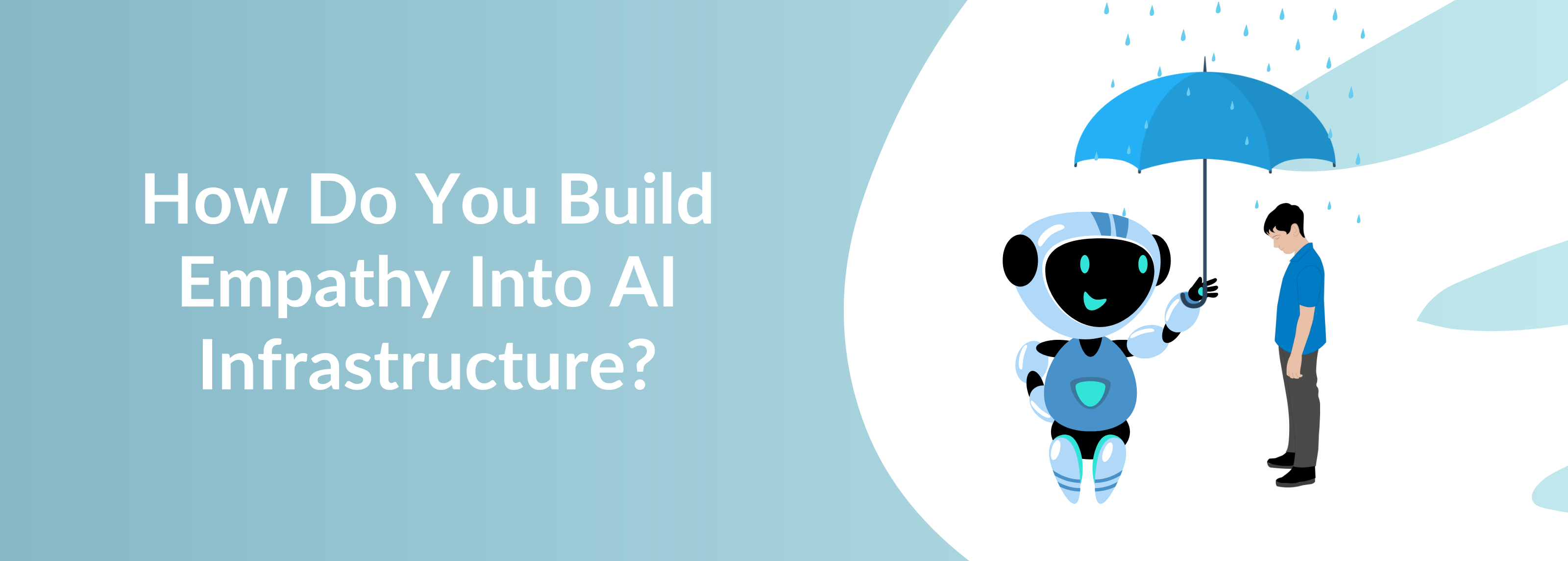How Do You Build Empathy Into AI Infrastructure?
Let us assume you call the customer support of the appliance company from whom you bought your refrigerator. You complain, saying that the coolant in your refrigerator burst and turned into flames.
You had to struggle to put off the flames with great effort.
Imagine doing this conversation with an AI assistant, and at the end of the call, would you like to be greeted with ‘Have a nice day?’
Definitely not!
You want to feel understood and cared for. Isn’t it?
How Do You Get Your AI Assistant to Be More Empathetic?
I will give you a couple of examples from the popular culture.
Two characters stand out when you think of AI in the world of popular culture: Jarvis from the Marvel Cinematic Universe and Samantha from the movie Her.
Both represent advanced AI systems.
Jarvis, Tony Stark’s AI assistant, is efficient and functional, helping Iron Man make life-saving decisions with incredible speed.
Jarvis also has a subtle layer of personality that makes interactions feel more human. He jokes, offers insights with a personal touch, and seems to understand Stark’s emotions to a degree.
This is the form of functional empathy – being responsive as well as being contextually aware that helps maintain a connection between human and machine.
Whereas, Samantha, the AI from Her, embodies emotional intelligence to the fullest extent. Samantha listens, learns, and even forms a deep emotional connection with Theodore Twombly, the protagonist.
While Samantha’s emotional depth is far beyond today’s AI, she represents the ultimate goal: creating AI systems that can forge meaningful, empathetic relationships with users.
Can AI Really Be Empathetic?
Is it only about recognizing keywords and resolving issues? Or does it go beyond this?
Your AI assistant will have to understand the context, personal history, and emotions of users to deliver responses that are genuine and human-like.
According to a survey by PWC, 59% of consumers feel companies have lost touch with the human element of customer experience.
What happens when you deploy AI solutions that are purely transactional?
While it helps to a certain extent, it doesn’t provide great experiences that customers want. They want to feel understood, valued and reassured.
How Do You Build Empathy Into AI Infrastructure?
Is it as simple as programming machines to act empathetic?
Certainly not, and it isn’t easy to do that either.
You will have to design systems that understand and respond to human emotions while staying within ethical and practical boundaries.
Here are the steps that one should look at to build empathy as a part of AI interactions:
Data Is Key to Contextual Understanding
How do you make use of the historical data, preferences, and emotional cues from previous conversations?
Do you at all use them?
Assume that I call customer support to help resolve a technical issue. Do I receive a personalized response? Does your AI assistant have access to my purchase history, past interactions, and the nature of the person I am?
Over time, the AI system will gradually learn user’s preferences and adapt its interactions to make them more personalized.
Natural Language Processing and Sentiment Analysis
Natural Language Processing (NLP) techniques can now detect the tone, intent, and sentiment behind a customer’s words besides the content.
For instance, if a customer’s tone shifts from neutral to disappointed, the AI could automatically adjust its response style to show understanding and offer speedy solutions.
Feedback and Control Loop
AI assistants can check in to understand customer feedback after solving a problem. It can learn from negative feedback to improve future interactions.
It should be designed to be adaptable and continually learn from each interaction, refining how they respond to similar situations in the future.
A Case Example
Have you heard of a mental health platform called Woebot?
It uses AI to converse with users and help them manage anxiety and depression. It does it in such a way that the users feel heard and understood.
Woebot doesn’t just offer solutions; it provides comfort, reassurance, and personalized support.
Woebot is a classic example of an AI system that goes beyond functionality to deliver a human-like touch.
Is There a Flip Side to This?
There definitely is. While AI can be programmed and trained to understand human emotions, you have to be mindful of the need to ensure privacy, fairness, and transparency.
We are at the beginning of the AI journey, where the need for empathy is deeply felt. The focus should be on creating more meaningful, personalized interactions that drive great experiences and long-term growth.
You should be looking at creating the next Jarvis, Samantha, or the more realistic Woebot. It is not just about solving problems efficiently but also about how AI makes users feel in the process.
